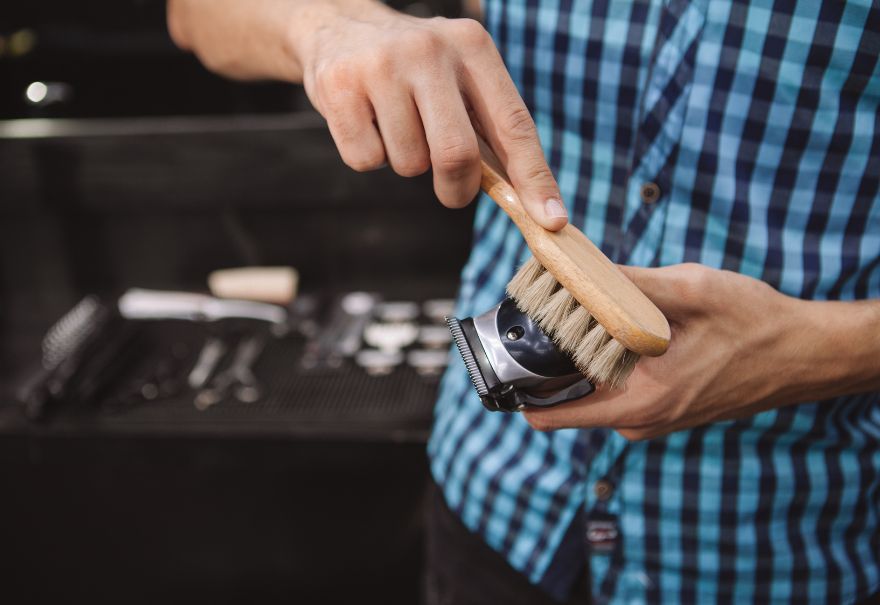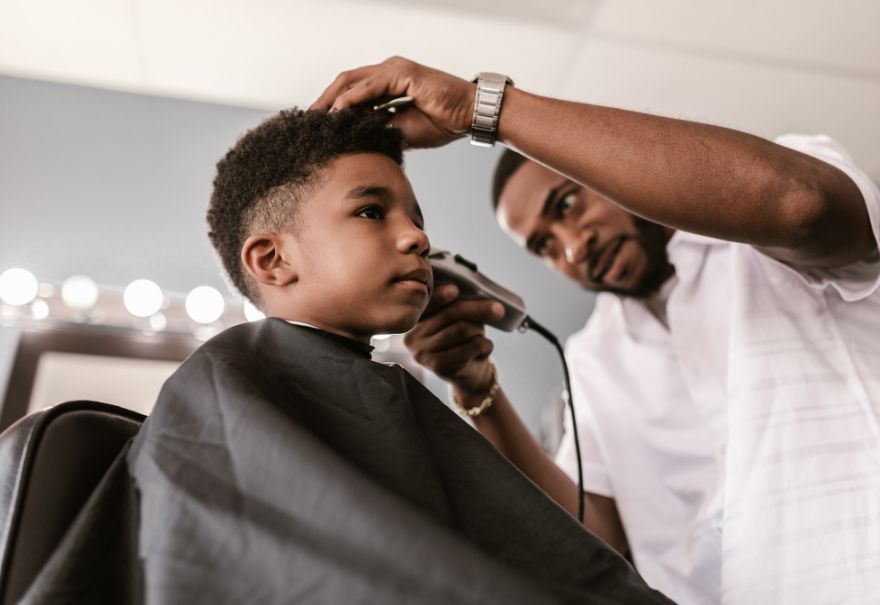How to use barber clippers? To use barber clippers effectively, start with clean, dry hair, choose the right guard length, and move the clippers against the direction of hair growth using smooth, controlled strokes. Always keep the blades clean, oiled, and disinfected for best results.
Whether you’re a new barber, grooming at home, or just looking to sharpen your skills, mastering barber clippers is essential for achieving sharp and even cuts. In this guide, you’ll learn step-by-step how to use barber clippers like a pro.
Tools You’ll Need
- Professional barber clippers
- Blade guards/combs
- Clipper oil
- Disinfectant spray
- Comb and brush
- Mirror (if cutting your own hair)
- Cape or towel

Step-by-Step: How to Use Barber Clippers
1. Prepare Your Tools and Workspace
Set up in a well-lit area with a mirror, cape or towel, and all your tools within reach. Make sure your clippers are clean, disinfected, and oiled before use. If you’re unsure, check out our guide on how to disinfect barber clippers.
2. Start with Clean, Dry Hair
Wash and completely dry the hair before cutting. Wet hair can clog the blades and lead to uneven results.
3. Choose the Right Guard Length
Clipper guards control the length of the cut. Lower numbers result in shorter cuts (e.g., #1 = 3mm), while higher numbers leave more hair. Attach the correct guard securely before starting.
4. Comb and Section the Hair
Comb the hair in its natural direction and decide on your cutting plan—typically starting at the sides and moving to the top.
5. Cut Against Hair Growth
Move the clippers against the grain (opposite direction of hair growth) for a closer, more even cut. Use slow, steady strokes and don’t rush. Re-comb and go over areas as needed.
6. Blend and Fade (Optional)
To create fades, switch between guard lengths and use blending techniques. Angle the clippers slightly as you move up the sides to soften lines. Practice is key here.
7. Edge and Outline
Remove the guard and use the bare blade or a trimmer to define edges around the neckline, ears, and sideburns. Hold the skin taut and work slowly for clean lines.
8. Clean the Clippers After Use
Brush off loose hairs, disinfect the blades, and oil them after every cut to extend the life of your tool and maintain hygiene. Learn more in our clipper maintenance guide.
Tips for Better Clipper Control
- Hold the clippers like a pencil for better precision.
- Keep a light but firm grip to avoid hand fatigue.
- Cut in small sections, especially if you’re new.
- Use mirrors to check angles and symmetry.

Can Beginners Use Barber Clippers?
Absolutely. Barber clippers are user-friendly once you understand how the guard system works. Start with longer guards to avoid taking off too much hair too quickly. With practice, you’ll gain confidence in handling them.
More Advanced Tips
Once you’re comfortable with the basics, you can begin exploring more advanced clipper techniques:
- Clipper-over-comb technique: This method is used by barbers to blend and shape hair manually, especially around the crown or for textured styles.
- Tapering and texturizing: By adjusting blade angles and switching guard sizes gradually, you can create subtle tapers and add movement to the hair.
- Maintaining consistency: Keep track of which guard lengths you use for different areas so you can replicate the same look during future cuts.
- Using detachable blades: For barbers using detachable-blade clippers, mastering blade sizes and when to use them gives you more precision and control.
Understanding the history and evolution of barbering can also help refine your skills and give you a deeper appreciation for the craft. Dive into the history of barbering to see how these tools and techniques developed over time.
Final Thoughts
Learning how to use barber clippers is a practical skill that can save you time and money while keeping your hair fresh between barbershop visits. With the right prep, technique, and tools, anyone can get clean, even results from home.
Want more grooming tips? Check out our guides on men’s grooming and what to ask for at the barbers for more expert advice. And if you’re ready to explore tools in greater depth, don’t miss our detailed post on barbering tools to find out what every beginner and pro should have in their kit. For further guidance on safe grooming practices, you can also refer to the NHS advice on hair and beauty hygiene.






